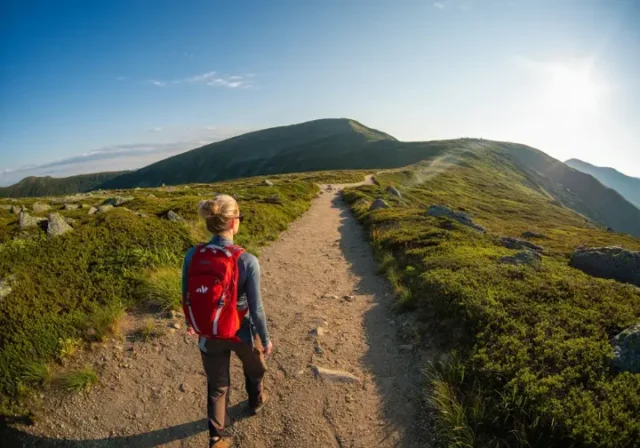In this article
This handbook is designed to be your definitive starting point, transforming you from a state of curiosity to one of active, confident, and responsible participation in the outdoor activity of hiking. Our goal is to empower you with the knowledge and confidence to not just go for a hike, but to become a hiker. We will cover everything you need to begin, from discovering the profound physical and mental health benefits of this hobby to learning how to assess your fitness and choose a suitable beginner trail. You will master the foundational knowledge of The Ten Essentials and Leave No Trace principles, receive a practical, budget-conscious guide to acquiring your first set of essential gear, and understand the core principles of safety and environmental stewardship, ensuring your first experience is a positive one.
The Call to the Trail – Finding Your “Why”
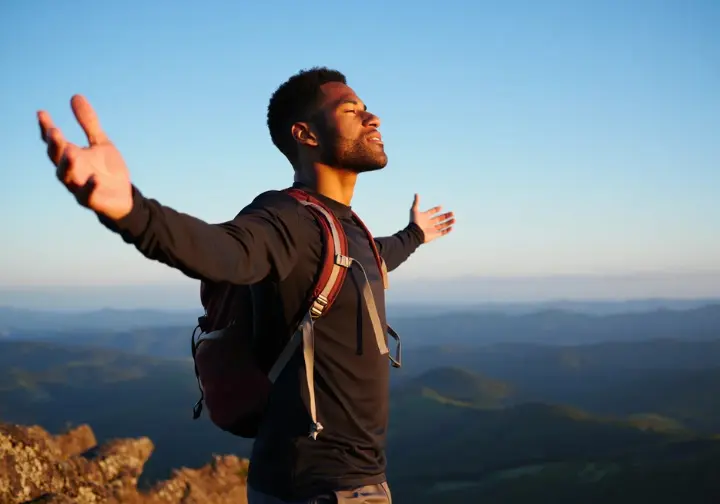
Exploring the core motivations and transformative benefits of hiking helps you connect with the reasons that will fuel your new outdoor hobby. We’ll delve into the science-backed physical and mental rewards that make hiking one of the most popular and fulfilling outdoor activities. Understanding this “why” is the first step in building a lasting passion for the trail.
The Physical Transformation: How Hiking Reshapes Your Body
Hiking is a powerful full-body exercise that extends far beyond a simple walk. The varied terrain of a trail engages your core for stability and recruits your upper body, especially when using trekking poles. This activity strengthens major leg muscles—including quadriceps, hamstrings, and glutes—more effectively than exercising on a flat surface, preparing them to handle steep inclines. This comprehensive muscle engagement improves your balance and overall functional fitness.
The cardiovascular benefits are extensive, directly contributing to a reduced risk of heart disease, lower blood pressure, and better blood sugar management. Regular hiking strengthens the heart, improves circulation, aids in weight control, and builds endurance. By better understanding how your body uses energy on the trail, you can turn each hike into a highly effective and enjoyable tool for preventative healthcare.
As a weight-bearing exercise, hiking is also crucial for building and maintaining bone density, which can help combat the onset of osteoporosis. The natural resistance from walking on uneven ground stimulates bone growth more effectively than many other forms of cardio. This combination of muscle, heart, and bone health highlights the tangible physical health benefits that make this activity so rewarding.
The Mental Reset: Finding Clarity and Peace in Nature
Engaging with the natural world through hiking offers a proven therapeutic effect, significantly reducing stress, anxiety, and symptoms of depression. This “ecotherapy” combines physical activity, natural light, and serene surroundings and beautiful scenery to lower cortisol levels and promote calm. Studies show that even short walks in nature can improve mood and reduce rumination, a pattern of persistent negative thinking.
Hiking also enhances cognitive function, boosting creativity and problem-solving skills. By removing yourself from the constant digital stimulation of modern life, you allow your brain’s prefrontal cortex to rest and recharge. This mental downtime is often when creative insights and solutions to complex problems emerge, making a walk in the woods a powerful tool for mental clarity. To maximize this, you can seek out lesser-known hidden gem trails for solitude where your mind can truly wander.
The pursuit of hiking fosters a sense of purpose and accomplishment. The simple act of setting a goal, like reaching a mountain summit or a lake, planning the journey, and overcoming physical challenges provides a tangible sense of achievement. This builds self-esteem and resilience, and the therapeutic effect of being in nature can translate into greater confidence in all areas of your life.
Preparing for the Path – Your Foundational Toolkit
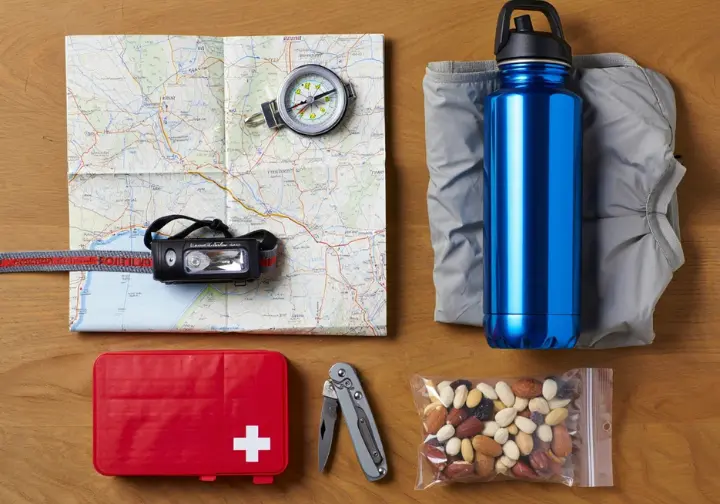
Getting started requires a foundational toolkit. We will guide you through the essential steps of planning, gear acquisition, and how to start hiking as a hobby, demystifying the process. We’ll address common anxieties about cost and complexity, equipping you with a system-based approach to safety and preparedness that will serve you on every trail.
Finding Your First Trail: A Beginner’s Guide to Discovery
Your first step is finding your first hiking trail that matches your current fitness level to ensure a positive and encouraging experience. For your initial beginner hikes, look for trails under 5 miles with an elevation gain of less than 500 feet. These metrics are designed to be achievable, helping you build confidence without risking exhaustion or injury.
Modern digital tools make trail discovery incredibly accessible. Apps like AllTrails or hikingproject.com are invaluable for getting started; learning to use their filters to search for trails rated “Easy” is a key skill. You should also check recent user reviews for current trail conditions, parking notes, and photos, which provide real-world insight. This is one of the many benefits of exploring the benefits of using free hiking apps for planning.
While apps are convenient, do not overlook analog and expert resources like trail guide books. Local and national park visitor centers are staffed by rangers who possess the most accurate, up-to-date information on trail conditions, wildlife, and closures. A brief conversation with a ranger can provide personalized recommendations that are often far more reliable than any single online source.
The Ten Essentials: A System for Survival, Not Just a Checklist
The Ten Essentials are the bedrock of hiking safety, developed by experts to help you handle unexpected emergencies. It’s critical to view this not as a random list but as an interconnected system for survival that ensures your self-reliance. This mindset shifts your thinking from simply packing your pack to strategic preparation for potential problems on the trail.
These systems include primary tools for managing your environment like Navigation (map, compass, GPS), Illumination (headlamp), and Sun Protection. Other systems focus on “what-if” scenarios: First Aid for injuries, a Repair Kit for gear failure, Fire for warmth in an emergency, and an Emergency Shelter (even a simple emergency bivy).
The final three systems—Extra Food, Extra Water, and Extra Clothing—are your insurance against miscalculation or unforeseen delays. Carrying an extra day’s worth of food, more water than you plan to drink, and an extra insulating layer addresses the most common causes of hiking emergencies. Having a firm grasp on this system is more important than any single item on a detailed list of things to bring on a day hike.
The Clothing System: Mastering the Art of Layering
The most critical rule in hiking attire is to avoid cotton. It absorbs moisture and loses all insulating properties when wet, drastically increasing the risk of hypothermia. A proper layering system is built on moisture-wicking fabrics like synthetic polyester or natural merino wool. This system allows you to actively manage your body temperature by adding or removing layers as needed.
Your system starts with a Base Layer worn next to your skin, designed solely to pull sweat away to keep you dry. Next is the insulating Mid Layer, like a fleece pullover or puffy jacket. The final piece is the Shell Layer, a waterproof and windproof jacket (like a packable rain jacket) and pants that protect you from rain and wind. Understanding these base, mid, and shell layers is fundamental to comfort.
Properly managing this system is a key skill. Start your hike feeling slightly cool (“Be Bold, Start Cold”), as your body will warm up quickly. Before you start to sweat heavily on a climb, stop and remove a layer. Before you get chilled on a windy ridge or during a break, put it back on. This proactive thermoregulation is a secret to staying comfortable and is a core part of a guide to choosing the best hiking attire.
The Footwear System: Your Most Important Investment
Your choice of footwear is the single most important gear decision you will make, as foot pain or blisters can ruin an otherwise great hike faster than anything else. You have two main choices: traditional hiking boots, which offer more ankle support for rocky terrain, or lighter trailrunners, which are more flexible and breathable. For most beginner trails on established paths, a good pair of trailrunners or lightweight hiking shoes is an excellent starting point.
Just as important as the shoe is the sock. The “no cotton” rule is especially critical here; always wear socks made of merino wool or a synthetic blend. These materials wick moisture away from your skin, which is key to preventing the friction that causes blisters. It’s all part of a comprehensive framework for choosing the right hiking shoes.
Never take a brand-new pair of shoes/boots on a long hike. You must break them in by wearing them around the house, on errands, and on several short walks. This process allows the boot to mold to the shape of your foot and helps you maintain healthy feet by identifying potential “hot spots”—areas of friction—before they turn into painful, trip-ending blisters on the trail.
Starting a Hiking Hobby on a Budget
The fear of high startup costs is a major barrier for many, but it is entirely possible to get started safely and affordably with the right gear. The key is knowing where to save versus where to splurge. Your absolute priority for investment should be quality, well-fitting footwear, as this is directly tied to your comfort and injury prevention.
For clothing, you likely already own suitable items. Any non-cotton athletic wear, like polyester t-shirts and gym shorts or pants, will work perfectly for your first few hikes in fair weather. You can delay buying specialized hiking pants until you’ve committed to the hobby. This allows you to focus your budget on what matters most, like using strategies for finding discounted hiking boots.
To acquire other gear, look for money-saving hacks. You can often borrow items like a daypack or trekking poles from a friend. Major retailers offer gear rental programs, which is a fantastic way to try expensive items before buying. Lastly, check out secondhand options like REI’s Re/Supply program or a general outdoor store for high-quality used gear at a fraction of the retail price.
First Steps on the Trail – Execution and Etiquette
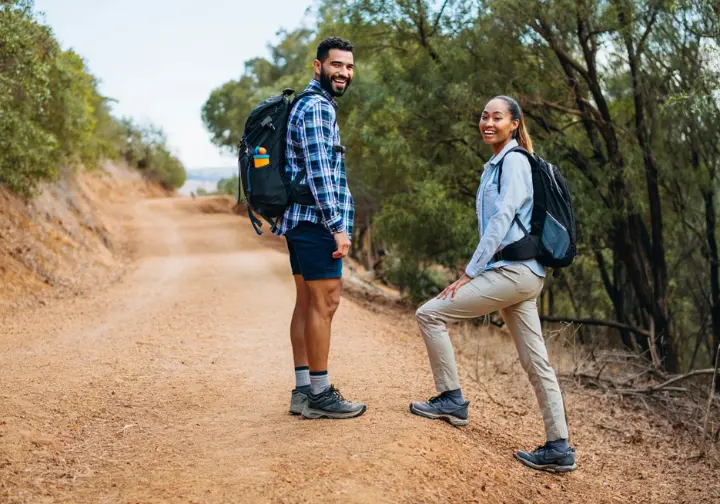
Practical, on-trail guidance for your first few outings helps build confidence. The focus is on handling common situations with skill and interacting respectfully with both the environment and other people. Mastering these fundamentals is what makes a hike enjoyable and safe for everyone on the path.
Pacing, Hydration, and Fueling in Action
One of the most common beginner mistakes when on a hike is starting out too fast. A sustainable pace is one where you can comfortably hold a conversation without getting breathless. This “conversational pace” ensures you’re using energy efficiently and preserves endurance for the entire hike, especially the return trip. Poor pacing is one of the common pitfalls like choosing a hike that’s too ambitious.
Hydration should be proactive, not reactive. By the time you feel thirsty, you are already dehydrated, which can lead to fatigue, headaches, and poor decision-making. Get in the habit of taking small, frequent sips of water throughout your hike, aiming for about a half-liter per hour in moderate conditions and more in the heat.
Similarly, fuel your body before you feel hungry. Pack easily digestible, high-energy snacks like trail mix, granola bars, or fruit. Eating small amounts consistently prevents energy crashes and keeps your muscles performing well, fueling your body’s movement. On longer treks, it is wise to prioritize calorie-dense foods.
Mastering Trail Etiquette and Right-of-Way
Understanding trail etiquette is key to ensuring a positive experience for everyone and minimizing your impact. The fundamental principle is to be courteous and aware of other hikers. This includes managing your noise level by avoiding loud music or shouting, which allows everyone to enjoy the natural sounds of the outdoors.
A crucial rule is yielding to others. Hikers going uphill on uphill climbs have the right-of-way, as they are working harder and have a more limited field of vision. If you are descending, step safely to the side of the trail and let the uphill hiker pass. Similarly, individuals and small groups should yield to large groups and any stock animals like horses or mules. Making good decisions requires an honest evaluation of your current fitness level.
When taking breaks or yielding, always move completely off the trail to a durable surface like rock or bare ground. This prevents you from blocking the path for others and protects the fragile landscape. This simple act of courtesy is a cornerstone of responsible trail use and a sign of a respectful hiker.
Considerations for Solo vs. Group Hiking
For your first few hikes, it is highly recommended to go with a more experienced friend or join a group. This provides a significant safety net, as you have immediate help in case of a minor injury or disorientation. It’s also a fantastic way to learn from others and build your confidence in a supportive environment.
If you choose to hike alone, it’s critical to take extra precautions. Choose a popular, well-trafficked trail where you are likely to see other people, and go on a weekend when the trail will be busier. Make sure you are especially diligent about always leaving a detailed hike plan with a trusted contact who knows your planned trail routes and when to expect you back.
All solo hikers, but especially beginners, should consider carrying a satellite messenger or personal locator beacon (PLB) like a Garmin inReach. These devices allow you to send messages or an SOS signal with your location, even without cell service. This single piece of gear is the ultimate safety tool for anyone venturing out alone and is as important as other essential trip planning steps.
The Hiker’s Ethos – A Duty of Care
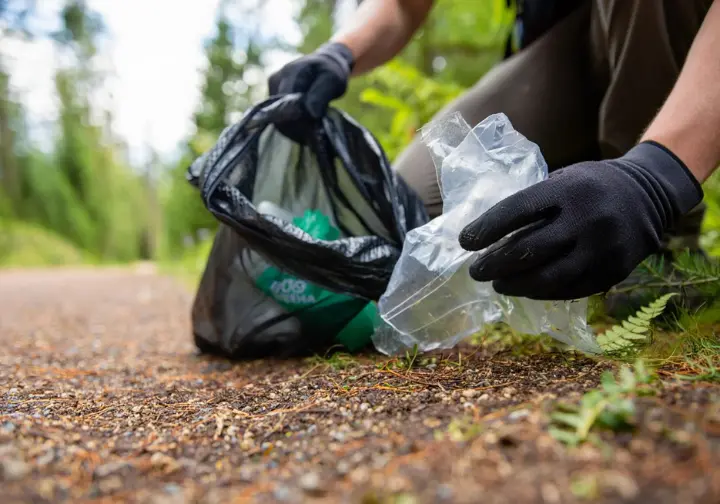
To become a true outdoor steward, you must elevate your understanding from the practical “how-to” of hiking to the responsible “how-to-be”. Mastering these principles of responsible outdoor behavior is a non-negotiable part of becoming a competent and respected member of the hiking community. It is a duty we all share to protect the natural habitats we love for future generations.
A Deep Dive into the 7 Leave No Trace Principles
The Leave No Trace (LNT) framework is the ethical framework for outdoor interaction that minimizes our impact on natural landscapes. It is built on seven core principles that guide our decisions. These are not just rules, but a mindset rooted in respect for nature and for the experience of future visitors. For those new to the outdoors, a detailed explanation of each of the seven principles is available from the LNT Center itself.
The first principles focus on preparation: Plan Ahead and Prepare, and Travel and Camp on Durable Surfaces. This means knowing the regulations for the area, carrying a map to stay on designated trails, and avoiding trampling fragile vegetation or disturbing wildlife. Durable surfaces include established trails, rock, gravel, dry grasses, or snow.
Next are principles addressing waste and impact: Dispose of Waste Properly (pack it in, pack it out), Leave What You Find (resist taking rocks or flowers), and Minimize Campfire Impacts (use established fire rings and know fire bans). These actions preserve the natural state of the wild earth for everyone.
The final principles govern interactions with the living world: Respect Wildlife (observe from a distance, never feed animals) and Be Considerate of Other Visitors. By internalizing all seven principles, you contribute to the long-term health and sustainability of the wild places we all enjoy.
LNT in Practice: Packing Out and Catholes
The guideline “Pack It In, Pack It Out” is a fundamental practice of the Leave No Trace Seven Principles and applies to everything you bring. This includes obvious trash like wrappers, but also items many a first time hiker forgets, such as fruit peels, apple cores, and nutshells. While biodegradable, these items are not native, can take years to decompose, and can attract and harm local wildlife.
Properly disposing of human waste is a critical skill for protecting water sources. In areas without toilets, you must dig a “cathole” 6 to 8 inches deep and at least 200 feet (about 70 adult steps) away from any water, trail, or campsite. After use, fill the hole back in with the original dirt and disguise it with natural material. This practice is taught by every key educator of LNT.
It is critical to remember that toilet paper and hygiene products must be packed out in a separate, sealed bag. They do not decompose quickly and are often dug up by animals. This practice, while seeming inconvenient, is a non-negotiable part of responsible backcountry travel that protects the health of the ecosystem and the experience of others.
From First Summit to a Lifelong Journey
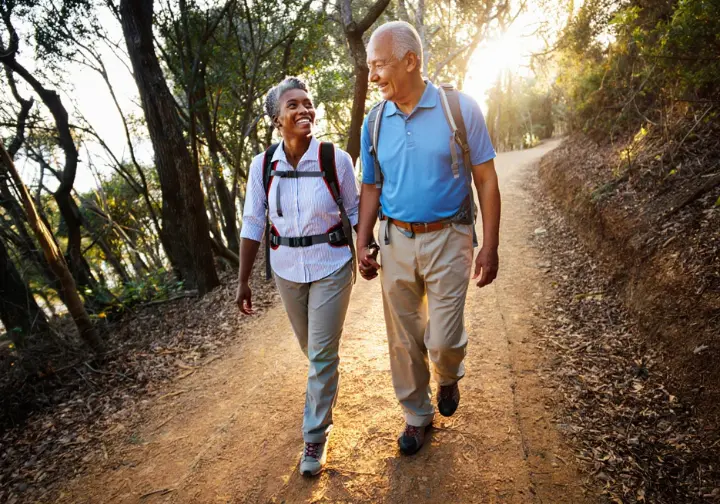
Your initial accomplishments on the trail should be framed not as an endpoint, but as the beginning of a fulfilling journey. This guide provides a clear and safe pathway for progression, ensuring you continue to grow as a hiker within a sustainable framework. Your first hike is just the gateway to a world of new experiences and challenges.
The Progression Pathway: Choosing Your Next Adventure
After successfully completing your first few easy hikes, you can begin to “level up” by gradually increasing the challenge on new trails. A safe method is to increase only one variable at a time: either distance or elevation gain, but not both at once. Your next hike could be a similar distance with more elevation, or a longer hike with a similar flat profile.
Use your previous hike as a baseline. After a hike, reflect on how you felt. Were you tired but energized, or completely exhausted? This self-assessment is crucial for making an informed and safe choice for your next outing. It prevents the common mistake of attempting a hike that is too ambitious too soon, which can be discouraging.
Once you are confidently completing moderate day hikes, you can explore new skills. This might include learning to navigate with a map and compass on more demanding trails, planning your first winter hiking trip, or preparing for your first overnight hiking or even multi-day hikes strung together. This structured progression, where transitioning from day hiking to backpacking can eventually lead to long distance hiking or even a thru hike, keeps the hobby engaging.
Conclusion: The Trail Goes On
Reaching your first summit or completing your first challenging hike is a landmark achievement and a moment of profound personal accomplishment for any hiker. It is a result of your preparation, perseverance, and newfound skills. This is not the end of the journey; it is the true beginning.
Hiking is a lifelong pursuit of exploration and adventure. Each trail offers new lessons, new challenges, and new opportunities for growth. The skills and confidence you have built are the foundation for a lifetime of adventure, and you can find endless inspiration from captivating thru-hiking literature.
As you continue on your path, remember the words of the naturalist John Muir: “In every walk with nature, one receives far more than he seeks.” Embrace the process, stay curious, and continue to explore. The trail goes on, and your adventure has just started.
Frequently Asked Questions about Starting Hiking as a Hobby
What is the single biggest mistake beginners make when starting to hike? +
Do I really need to buy expensive hiking boots to start? +
How much water should I actually carry for a day hike? +
Is it safe for a beginner to go hiking alone? +
We are a participant in the Amazon Services LLC Associates Program, an affiliate advertising program designed to provide a means for sites to earn advertising fees by advertising and linking to Amazon.com. As an Amazon Associate I earn from qualifying purchases. We also participate in other affiliate programs. The information provided on this website is provided for entertainment purposes only. We make no representations or warranties of any kind, expressed or implied, about the completeness, accuracy, adequacy, legality, usefulness, reliability, suitability, or availability of the information, or about anything else. Any reliance you place on the information is therefore strictly at your own risk. Additional terms are found in the terms of service.



